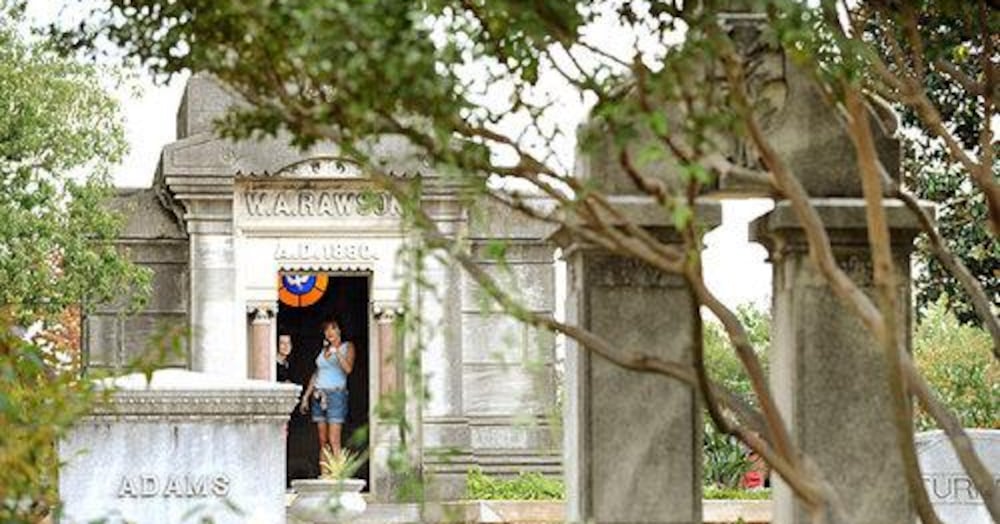Five stories of the residents of Oakland Cemetery you might not have heard

Oakland Cemetery holds the distinction of being the oldest public park in Atlanta. Visitors celebrate weddings and learn in its outdoor classroom area, and they also go to visit the gravesites of some of the most prominent contributors to the city’s history.
Some of those resting occupants made a significant mark on Atlanta’s evolution, but they may have narratives most people aren’t as familiar with. Here are five such stories:
Dr. Jennie Newman Norris
Norris was one of the first female physicians to serve Atlanta. She attended the Women’s Medical College of Georgia and was a member of its first graduating class. She delivered many babies and oversaw well over 100,000 medical cases during her three-decade career. She briefly faced criminal charges after performing an operation she felt would save a patient’s life. At the time, the procedure was deemed illegal, but Norris was eventually cleared of the charges and continued practicing medicine.
Read more about Dr. Norris at oaklandcemetery.com.
Thomas Askew

Askew moved to Atlanta after emancipation from slavery. His work included portraits of Atlanta’s Black residents of varying ages, dress and professions — he photographed his subjects from perspectives that represented the middle class. His work aided the Black population at the time as they strove to claim representation of their own portrayals. Some of his photos appeared as part of the 1900 Paris Exposition in an exhibit W.E.B. DuBois helped curate. Unfortunately, a large amount of Askew’s work was lost to the Great Fire of Atlanta in 1917, which consumed his home and studio. A significant number of the nine children he and his wife, Mary, had became prominent members of Atlanta society.
Read more about Askew at oaklandcemetery.com.
Lollie Belle Moore Wylie
Moore, an Alabama native, moved with her family to Atlanta in 1865 after her father passed away. She later married, and when her husband died in 1887, she found herself the sole provider for their two children. She turned to newspapers for employment and, as the Atlanta Journal’s society editor, she made her mark as the first woman a Georgia newspaper employed in a paid position. Wylie continued her career with other publications and founded the Atlanta Writer’s Club and the Woman’s Press Club of Georgia. She also lent her talent to the music world, composing “Georgia,” which was the official song of the state from 1922 to 1979.
Read more about Moore at oaklandcemetery.com.
August Denk
An Atlanta resident, Denk boarded the City of Athens steam ship in New York City in 1918 after having visited a mill his employer, the Fulton Bag and Cotton Company, owned. Because it was wartime, ships had to run with significantly reduced light, and in the early morning hours of April 31, the City of Athens collided with the Gloire, a French cruiser patrolling for U-boats. Sixty seven passengers, Denk among them, were considered lost at sea after the City of Athens sank in just a few minutes. An Oakland stone marks his life with the phrase “lost at sea.”
Read more about Denk at oaklandcemetery.com.
Green Amos Pilgrim
This South Carolina native ended up in Atlanta in 1845 — a time when its population numbered in the low hundreds. In 1853, he took the position of Oakland Cemetery sexton, overseeing its operations. When the Civil War Battle of Atlanta ended in the summer of 1864, soldiers from both the Confederate and Union armies had to be buried in temporary spots throughout the city. Pilgrim, who ultimately served for 16 years as sexton, played a significant part in the process of reinterment, which many of these soldiers underwent at Oakland. Sexton’s permanent return to Oakland occurred at age 93 in 1899 when he passed away after a lingering illness.
Read more about Pilgrim at oaklandcemetery.com.
Want to learn more about the history of Oakland Cemetery and its occupants? Check out their guided tours on Saturdays, Sundays and Wednesdays.
